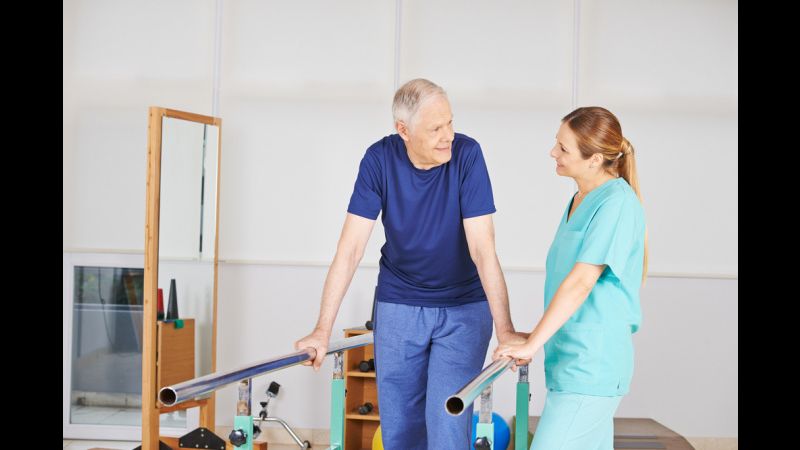In the third installment of our Caregiver Resource series, we spoke to Barrett L. Dorko, a Physical Therapist.
Barrett L. Dorko, P.T.
I am a licensed physical therapist in the state of Ohio and graduated from The Ohio State University in 1973. First and foremost, physical therapy seeks to help the patient with movement. Difficulty with this might arise from pain or weakness, a loss of range for a variety of reasons or problems with coordination that might occur suddenly or slowly over time.
It is the physical therapist’s job to determine the best way of helping you realize how you might overcome your difficulty and maintain healthy, painless motion that contributes favorably to the things you commonly do or may be asked to tolerate as you live your life. Toward that end, physical therapists might determine that some modality of heat or cold will be best to prepare your tissue for the change necessary to assist your function. They often commonly instruct and assist people with walking, transferring from one surface to another and building strength and endurance with movement against resistance. Methods of doing things in a safe, thoughtful and painless manner requires that we often do things with greater awareness and less speed than we might have before difficulty arose. A physical therapist is trained to help you with all of that.
There are specialties within the profession as well. There are those who have tests that demonstrate their expertise in things such as cardiac, orthopedic and pediatric care. Asking about various certifications can help you when making a decision about where to pursue care.
Physical therapy, like many professions today, is in a state of flux. This is especially true with respect to the management of painful problems. Perhaps it is most clearly stated in this manner: Traditionally, a patient’s complaint of pain, typically resulting in difficulty with motion, was thought to have its origins in tissue damage that could be seen or reasoned to be present via visible asymmetry. Recent research, however, has helped us understand that pain is always a consequence of our brain’s opinion about what’s going on, and the brain isn’t always right. We now know that the relationship between tissue damage and pain is commonly mistaken. What this means is that education from the therapist to patient is crucial and that an interaction between the two can be rewarding. We know that it is essential for success.
For the older patient, physical therapy can be an essential part of their continuing to live in a setting that cannot provide the sort of assistance needed by someone with difficulty balancing, walking or transferring from one surface to another. In the later years of life, our ability to do things such as climb stairs, travel and care for ourselves when endurance and mobility are required might all be addressed with various aspects of the physical therapist’s training and expertise. In fact, your first introduction to this practice might very well be as the end result of decreased mobility secondary to your age. As with many practices of physical therapy, special training and certification is available for this sort of treatment.
In short, the physical therapist needs to be constantly aware of the literature, the possibilities each modality in their clinic might offer the appropriate patient at the proper time and when their program should be altered to their benefit. Physical therapy is always driven by the patient’s presentation and response, therefore documenting that carefully and regularly communicating with all parties involved is essential.
Barrett L. Dorko P.T. has been a prolific writer in his profession since 1983. Now much of his work can be found on his web site barrettdorko.com and, more recently, on Somasimple.com where he moderates and contributes a daily blog. He teaches throughout the United State and Canada on the subject of manual management of painful problems, this year extending his presentation to Norway and Brazil.

